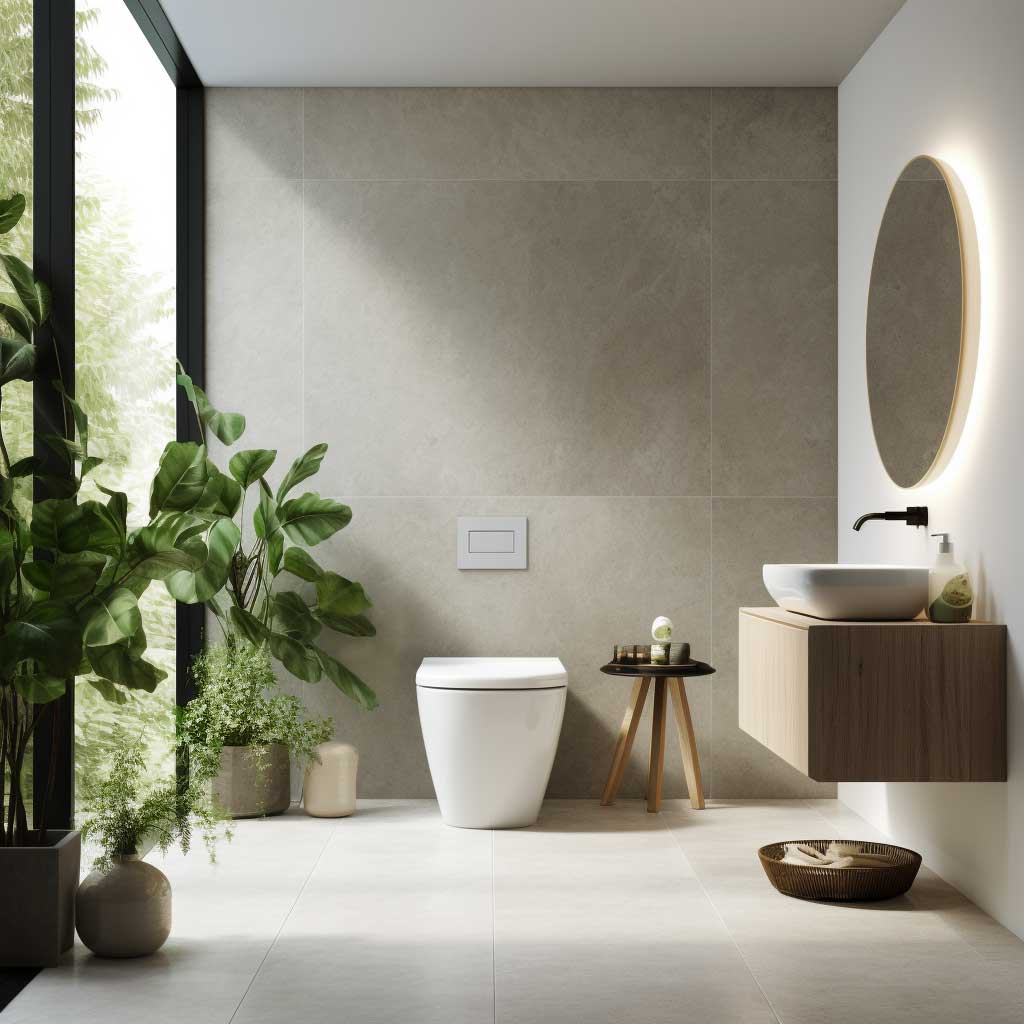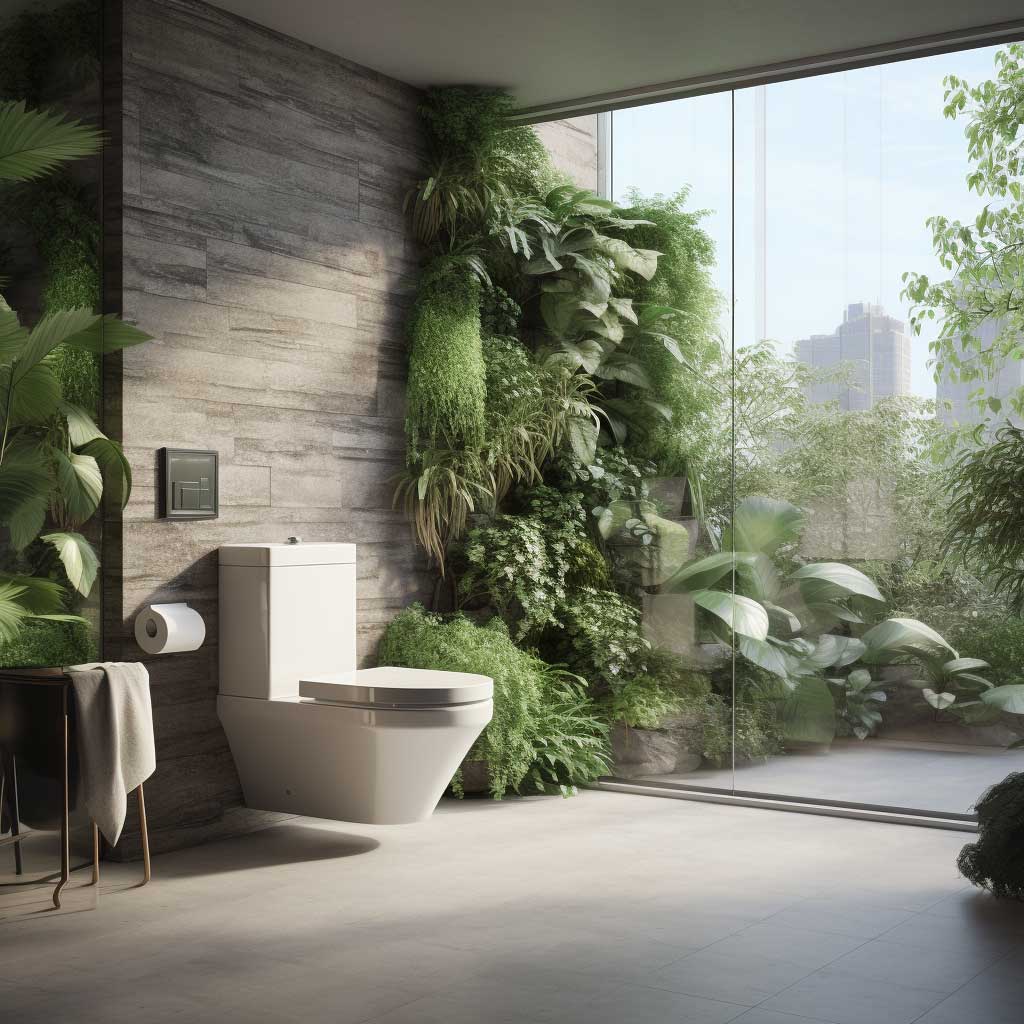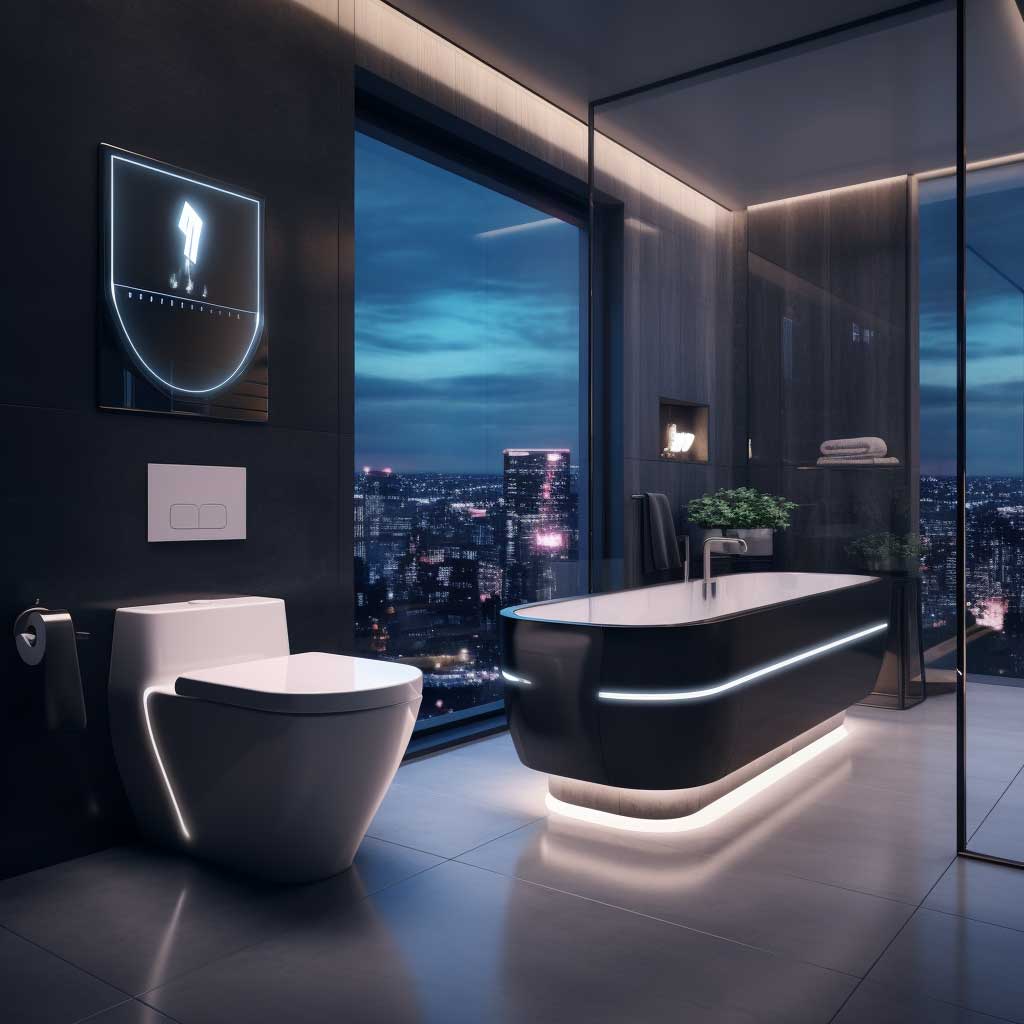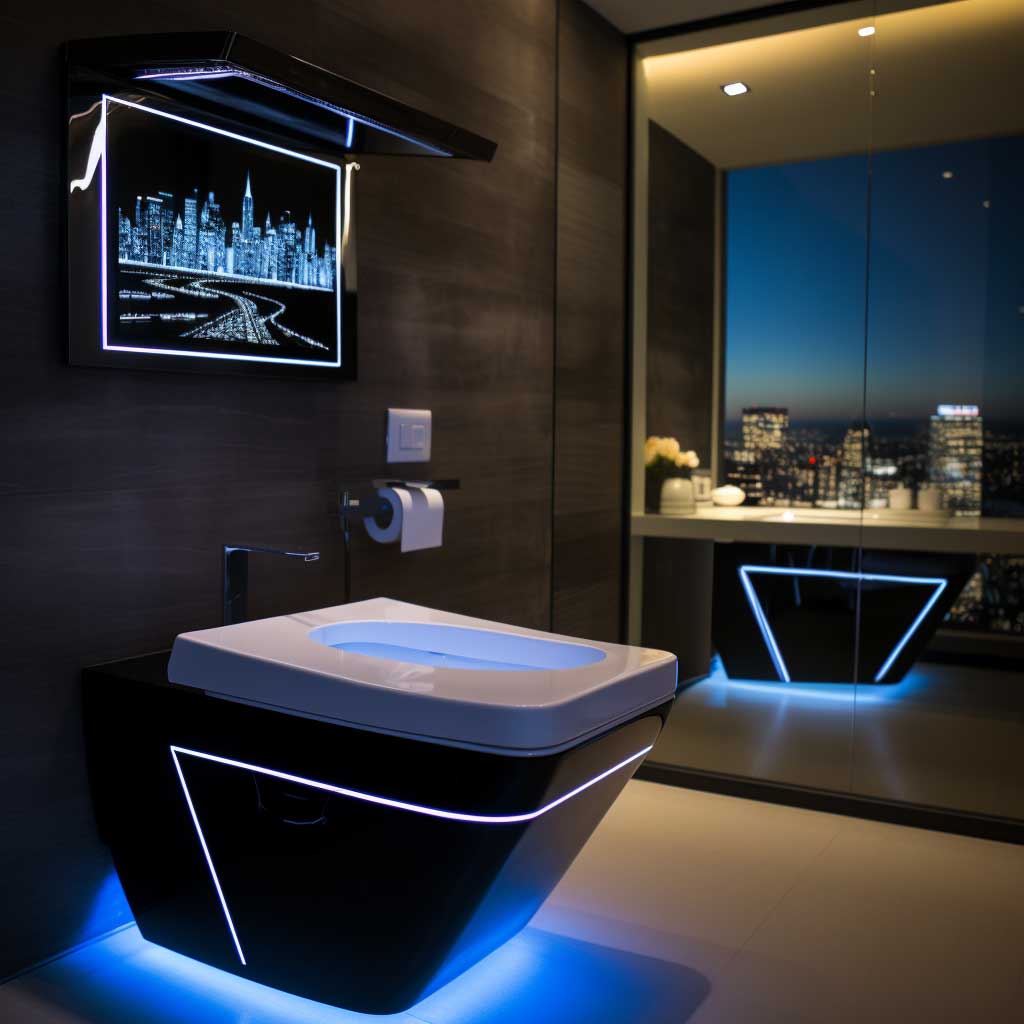Dive into the world of contemporary toilet design, where functionality meets cutting-edge style. This article explores the latest trends that are redefining the aesthetics and utility of modern bathrooms. From innovative materials to smart technology, discover how these designs are elevating the everyday experience of personal spaces.
Innovative Elegance in Toilet Design




The world of contemporary toilet design is experiencing a renaissance, where elegance and innovation converge to redefine the standards of modern bathrooms. Gone are the days when toilets were mere functional fixtures; today, they are pivotal elements in interior design, reflecting the sophisticated tastes and technological advancements of the 21st century.
The essence of modern toilet design lies in its simplicity and minimalism. Designers and manufacturers have shifted towards creating pieces that not only serve their fundamental purpose but also complement the aesthetic of the modern bathroom. The emphasis is on sleek lines, geometric shapes, and a clean, uncluttered look. These designs reflect a deep understanding of space utilization, ensuring that even the smallest bathrooms feel open and luxurious.
Material selection plays a crucial role in these contemporary designs. High-quality ceramics, often with smooth, glossy finishes, are the standard. However, there is a growing trend towards innovative materials like treated wood, stone, and even glass. These materials not only add a touch of elegance but also bring durability and ease of maintenance to the forefront.
Color schemes in modern toilet design have evolved as well. While classic white remains popular for its timeless appeal and ability to blend with any decor, there is a growing interest in bolder choices. Matte black, deep greys, and even metallic tones are making their way into toilet design, allowing homeowners to make a statement in their bathroom spaces.




The influence of technology in contemporary toilet design cannot be overstated. From rimless designs that make cleaning easier to soft-close seats that add a touch of luxury, technological advancements are at the heart of modern design. Some models even incorporate eco-friendly features like water-saving flush systems, reflecting a global shift towards environmental consciousness.
Another notable trend is the integration of smart technology. Touchless flushing, self-cleaning surfaces, and built-in bidet functions are just a few examples of how technology is enhancing the user experience. These features not only provide convenience and hygiene but also cater to a growing demand for homes that are equipped with the latest technological innovations.
The focus on user experience extends to the installation and maintenance of these toilets. Easy-to-install designs are increasingly popular, reducing the need for professional help and making renovations simpler for homeowners. Similarly, easy-to-clean surfaces and removable parts are becoming standard, ensuring that maintaining these toilets is as effortless as using them.
In conclusion, contemporary toilet design is an amalgamation of form, function, and technology. It reflects a broader trend in home design – where comfort, aesthetic, and innovation are not just desired but expected. As these designs continue to evolve, they will undoubtedly play a significant role in shaping the future of bathroom interiors, making them spaces of tranquility, elegance, and sophistication.
Eco-Friendly Toilet Solutions for Modern Bathrooms




The realm of modern bathroom design is witnessing a significant shift towards sustainability, with eco-friendly toilets emerging as a cornerstone of this movement. These contemporary designs are not just about aesthetics; they embody a deeper commitment to environmental responsibility, merging advanced technology with ecological sensibility.
At the heart of eco-friendly toilet design is water conservation. Traditional toilets are notorious for their high water usage, but modern designs are challenging this norm with low-flow and dual-flush systems. These technologies allow for significant reductions in water usage, a crucial step in conserving this precious resource. Low-flow toilets use less water per flush, while dual-flush systems offer two flushing options – one for liquid waste and another for solid waste – further optimizing water usage.
Material innovation is another key aspect of these eco-friendly designs. Sustainable materials such as recycled porcelain and ceramics are increasingly being used, reducing the environmental impact of production. Some designs also incorporate elements like bamboo, known for its rapid growth and renewability, adding a stylish yet sustainable touch to the bathroom.
The aesthetic appeal of these eco-friendly toilets is also evolving. Designers are creating models that are visually appealing, featuring sleek lines and modern shapes that complement the contemporary bathroom. The use of natural colors and textures ensures that these toilets blend seamlessly with other eco-conscious design elements, creating a cohesive and tranquil bathroom space.




The integration of technology is enhancing the functionality of these eco-friendly toilets. Innovations such as automatic flushing systems, which use sensors to determine the amount of water needed, further optimize water usage. Some models even include features like self-cleaning surfaces, reducing the need for harsh cleaning chemicals and contributing to a healthier environment.
Ease of installation and maintenance are also focal points in these designs. Many modern eco-friendly toilets are designed for easy installation, allowing homeowners to upgrade their bathrooms without significant renovations. Their maintenance is equally straightforward, with many models featuring surfaces that resist stains and minimize the need for frequent cleaning.
The impact of these eco-friendly toilets extends beyond individual homes. As more people embrace these sustainable designs, the collective water savings can have a significant impact on local and global water resources. This shift towards eco-friendly bathroom fixtures is a reflection of a growing awareness of environmental issues and a commitment to making sustainable choices in everyday life.
In essence, contemporary eco-friendly toilets represent a confluence of design, technology, and sustainability. They are a testament to the possibility of creating beautiful, functional spaces that also respect and protect the environment. As these designs continue to evolve and gain popularity, they are set to play a pivotal role in shaping the future of bathroom design, making it more sustainable and eco-friendly.
Smart Toilets Revolutionizing Bathroom Experience




The landscape of bathroom design is being transformed by the advent of smart toilets, a marvel of contemporary innovation. These advanced fixtures are redefining what it means to have a modern bathroom, blending cutting-edge technology with unparalleled comfort and hygiene. The result is a bathroom experience that is not only luxurious but also attuned to the needs of today’s tech-savvy homeowner.
Smart toilets stand at the forefront of this revolution, offering features that were once the realm of science fiction. Automated lids that open and close with a motion sensor, temperature-controlled seats, and personalized cleansing functions are just the beginning. These toilets are designed to provide a tailored, hygienic, and more comfortable experience, setting a new standard in bathroom technology.
One of the most significant advancements in smart toilet design is the integrated bidet. This feature offers a more hygienic alternative to traditional toilet paper, with adjustable water temperature and pressure settings. Some models even include air dryers, providing a complete and touch-free cleaning experience. This not only elevates personal hygiene but also contributes to environmental sustainability by reducing the need for toilet paper.
Another innovative aspect of smart toilets is their self-cleaning technology. Many models come equipped with self-sanitizing functions, using UV light or electrolyzed water to clean the bowl and seat. This not only ensures a cleaner and more hygienic toilet but also reduces the time and effort required for bathroom maintenance.



User comfort is a priority in smart toilet design. Features like heated seats and customizable ambient lighting create a more relaxing and comfortable bathroom environment. For those cold winter mornings or late-night visits, these features transform the bathroom from a purely functional space into a haven of comfort.
Energy efficiency is also a key consideration. Despite their advanced features, many smart toilets are designed to be energy-efficient. They often include eco-friendly flushing systems that use less water, and some are even equipped with energy-saving modes to reduce electricity consumption. This makes them an ideal choice for environmentally conscious consumers looking to modernize their bathrooms without increasing their ecological footprint.
The aesthetic appeal of smart toilets complements their technological prowess. Sleek, streamlined designs with hidden tanks and minimalistic controls integrate seamlessly into contemporary bathroom interiors. These toilets are not just smart in function; they are also smart in form, enhancing the overall look and feel of the bathroom.
In conclusion, smart toilets are more than just a luxury; they are a statement of how far bathroom technology has come. By combining comfort, hygiene, and sustainability with elegant design, they offer a glimpse into the future of bathroom experiences. As these technologies continue to evolve and become more accessible, smart toilets are poised to become a staple in modern homes, transforming our daily routines and elevating our standard of living.
Contemporary toilet designs are much more than mere functional elements in modern bathrooms; they are central to the transformation of these spaces into havens of comfort and innovation. By combining aesthetic appeal with technological advancements and sustainability, these designs not only enhance the visual appeal of bathrooms but also contribute to a more efficient and enjoyable daily routine.












